If you walk around in Sabah, you might notice small shrines outside buildings, under big trees, or near construction sites. Inside sits a smiling old man figure holding a dagger. Many locals will tell you that this is Datuk Gong (拿督公), also called Datok Gong. For many, he is one of the most misunderstood guardian spirits in Malaysia.
Made in Malaysia
Before Christianity and Islam reached Malaysia, many local communities practiced animism. People believed that every tree, rock, river, or mountain carried a spirit. The idea of Keramat comes from this old tradition.
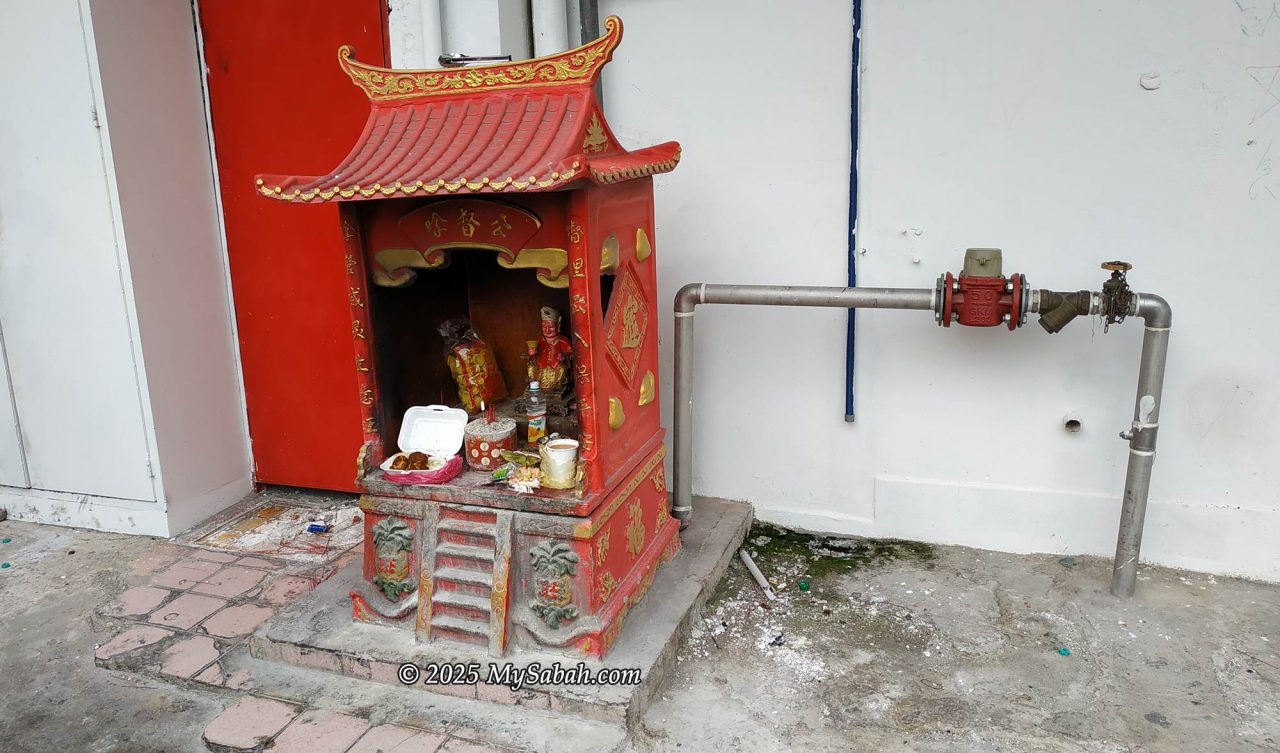
Keramat means “sacred.” It can describe the grave of a saint, or it can refer to animals, plants, stones, or places that are believed to hold supernatural power. The word comes from the Arabic “Karamāt,” which means miracles that happen with God’s permission through a holy person.
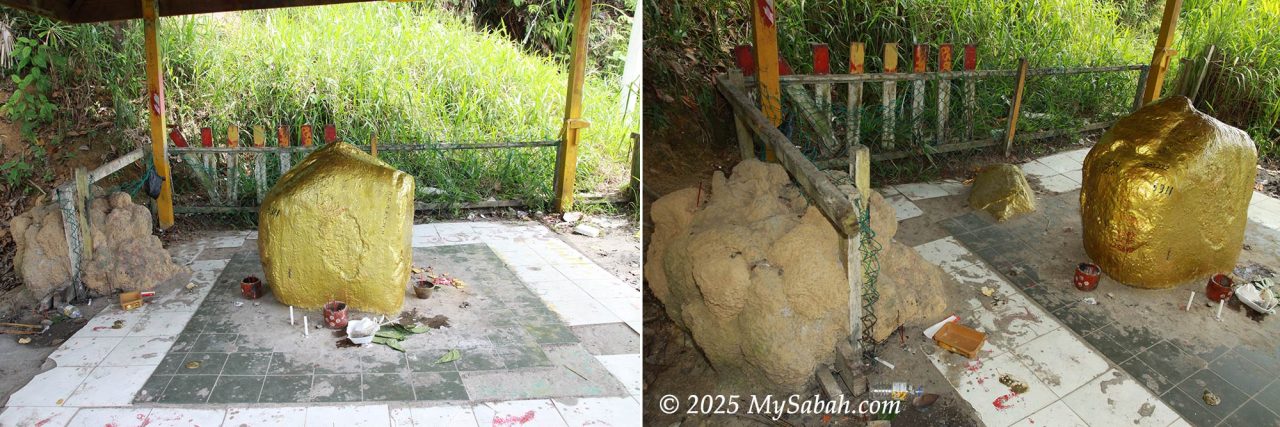
In earlier times, Malay communities respected Keramats as local guardian spirits. They often addressed them as Datuk, a title of respect used for elders, leaders, or saints. Over time, Islamic teachings emphasized that worship should be directed only to Allah. With the rise of the dakwah movement in the 1970s, many Malays gradually let go of Keramat practices. As a result, Datuk Gong shrines became less common among the very community that created them.
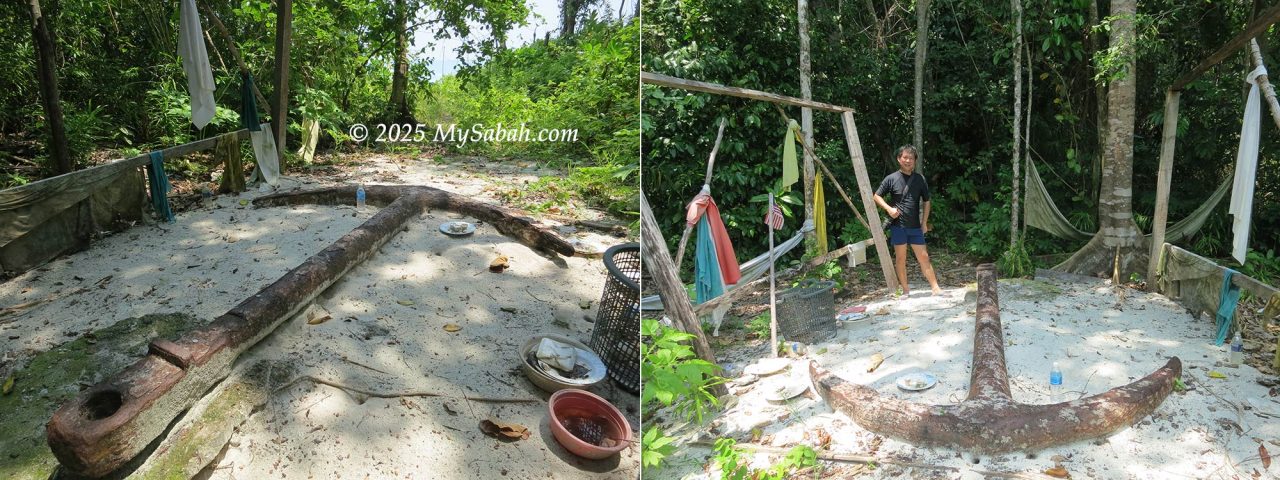
Meanwhile, in the early 20th century, Chinese migrants arrived in Malaysia as farmers, loggers, and construction workers. They brought along their own beliefs, including the worship of the Earth God “Tua Pek Kong” (大伯公/土地公/福德正神). His role as a protector of land and people felt very similar to that of Datuk Gong.
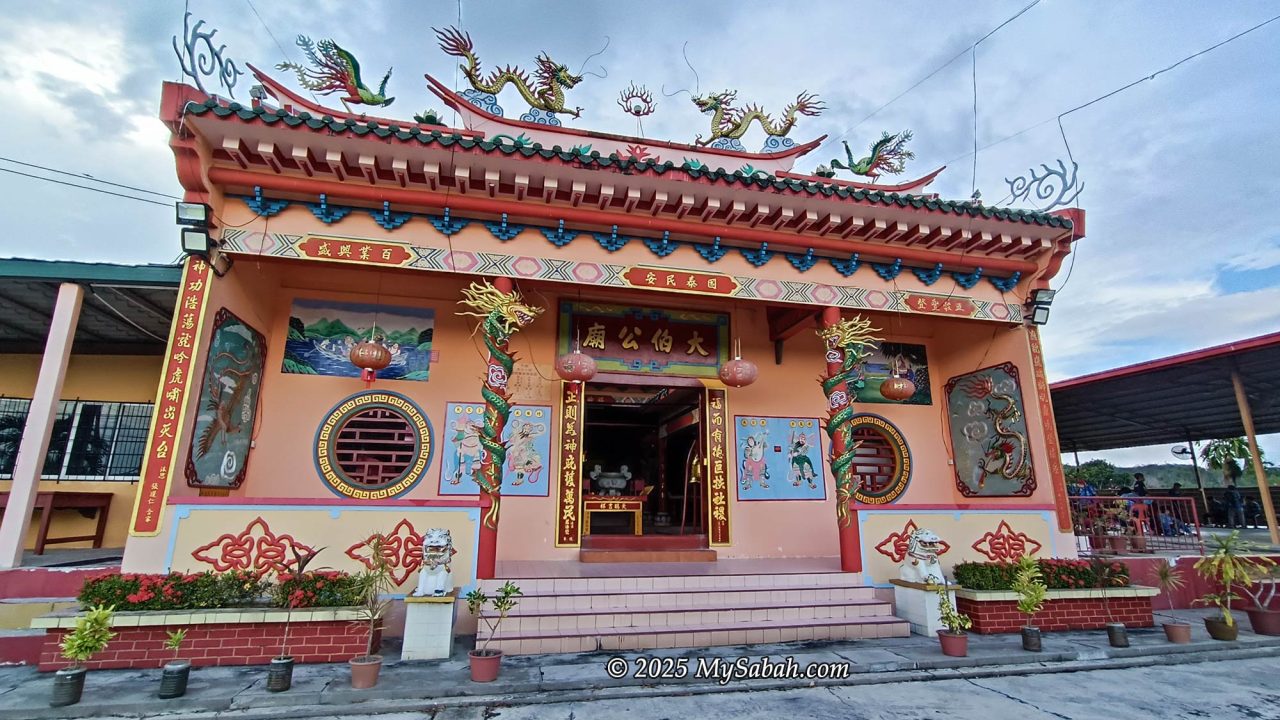
Chinese people often say, “When in Rome, do as the Romans do.” To fit into local life, many also prayed to Datuk Gong. For settlers clearing forests or working in nature, these shrines offered protection against unseen spirits. Even today, you will hear stories about spirits living in old trees or boulders that should not be disturbed.

Although Muslims moved away from Keramat worship, Chinese communities continued. They combined the Malay title “Datuk” with the Chinese honorific “Gong,” turning it into Datuk Gong. Under Taoist influence, Datuk Gong evolved into a localized version of the Earth God. In many ways, he is a unique blend of Chinese Taoist practice and Malay Keramat belief.
Is Datuk Gong a Malay Muslim?
A Datuk Gong spirit can be Malay, Chinese, Indian, or of another background. Sometimes the shrine will carry a name that points to a specific respected figure. But in most cases, especially in Sabah, the shrine has no name at all.
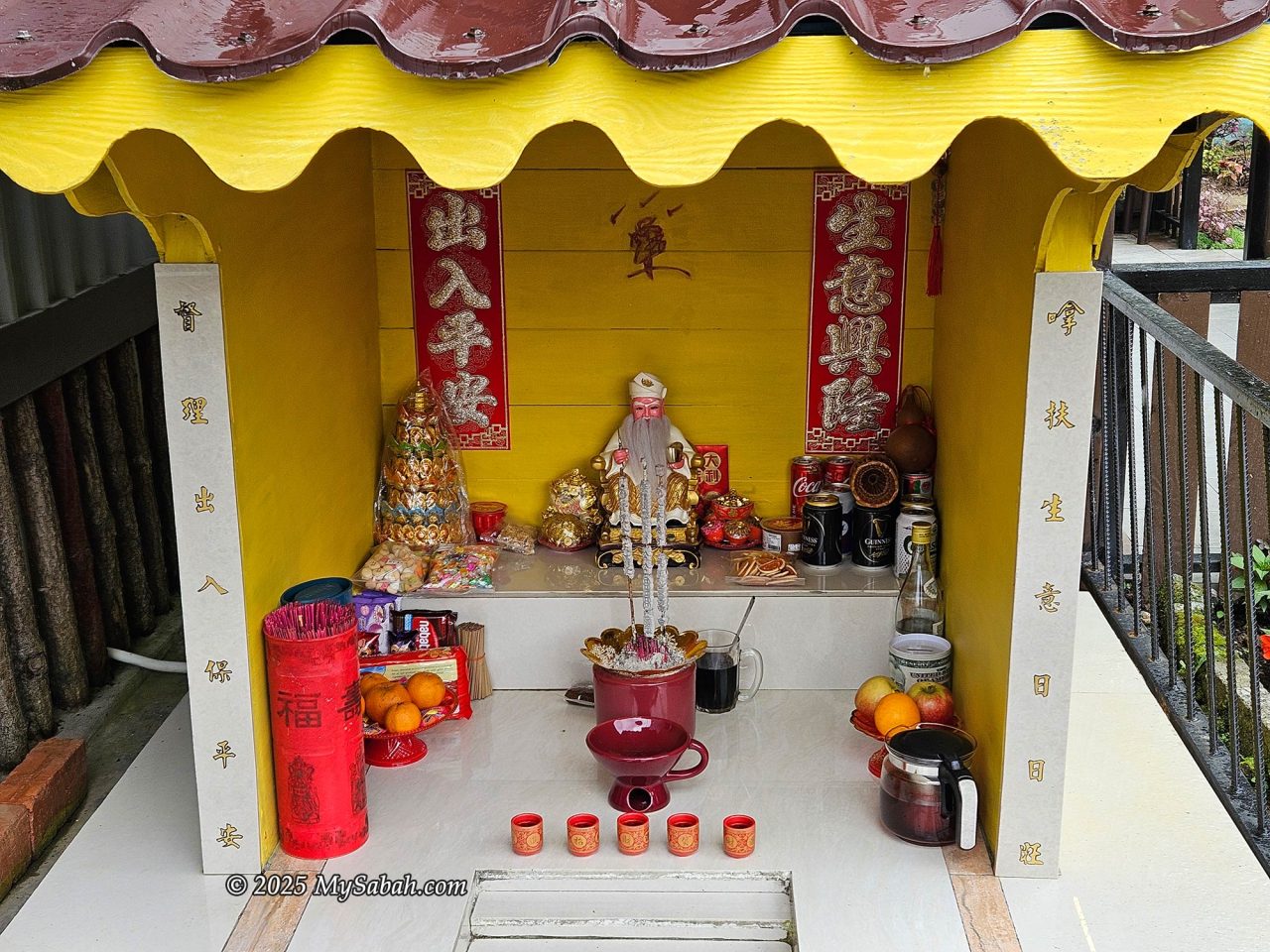
When unnamed, Datuk Gong is usually treated as a Malay Muslim elder. That is why worshippers avoid haram offerings like pork and liquor, and instead present food and items that suit Malay culture.
Is Datuk Gong a Deity?
Again, it depends. The idol may represent the spirit of a saint, a nature guardian, an animal spirit, a jinn, a ghost, or another supernatural being.

For Chinese worshippers, the belief is that such spirits help keep peace, harmony, and safety. That is why you will find Datuk Gong shrines not just in villages, but also in places of work such as farms, factories, timber camps, and construction sites.
Stories about Datuk Gong go both ways. Some describe him as a kind protector who saves a village during disaster. Others see him as fierce, punishing those who disrespect him. In Chinese tradition, he is often viewed as an underworld figure, both respected and feared.
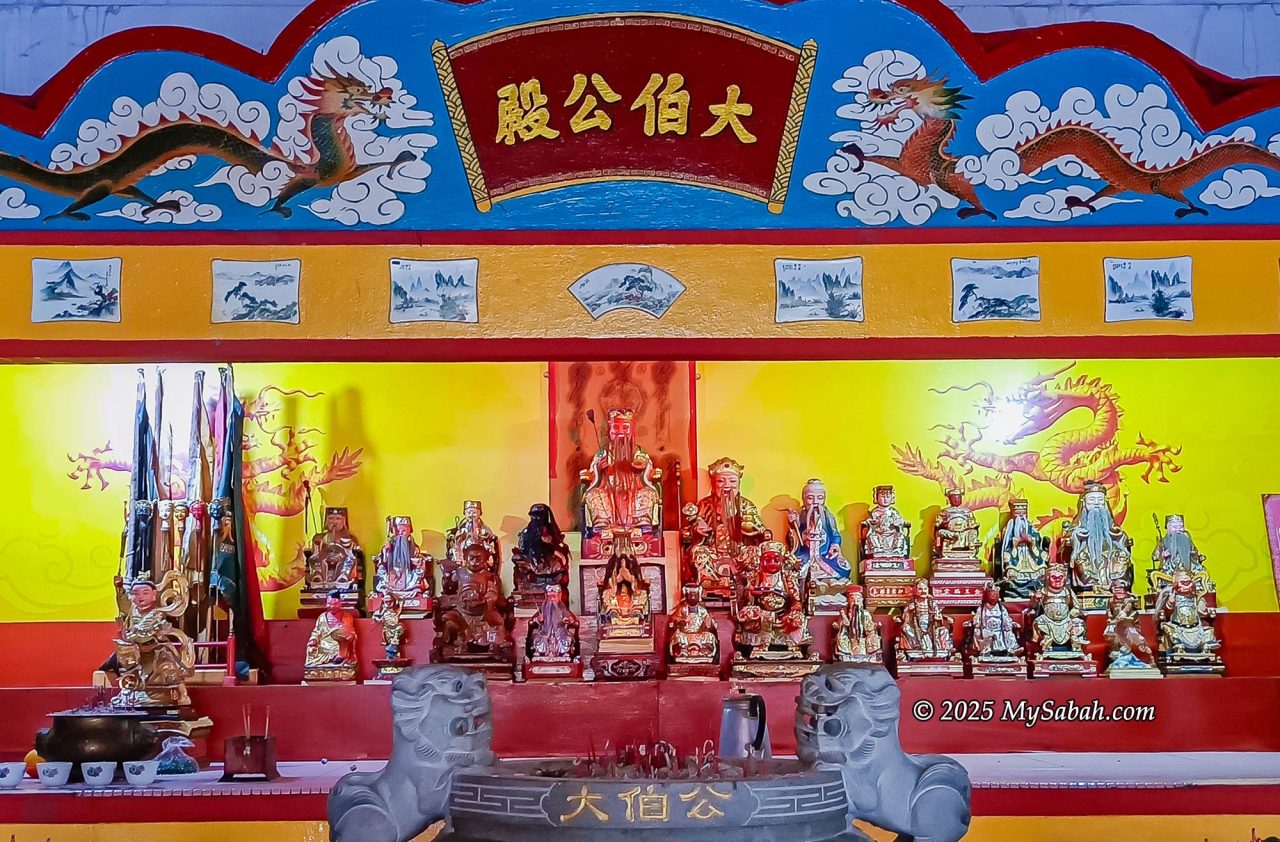
Over time, Datuk Gong gained status and became recognized as a semi-deity figure within local Taoism. Today, he is one of the most commonly worshipped spiritual figures among Malaysian Chinese. He also has shrines in Singapore and Indonesia.
Datuk Gong vs Earth God (Tua Pek Kong)
Even locals sometimes confuse Datuk Gong (拿督公) with the Earth God (大伯公/土地公/福德正神), calling them both Tua Pek Kong. While they look similar and both protect land, they are not the same.
1. Appearance
The earliest forms of Datuk Gong were not idols at all. They were tombs of saints, and natural objects like trees, rocks, or termite mounds. In the 1960s, people began building small shrines for Datuk Gong. Wooden tablets stood in for the spirit.
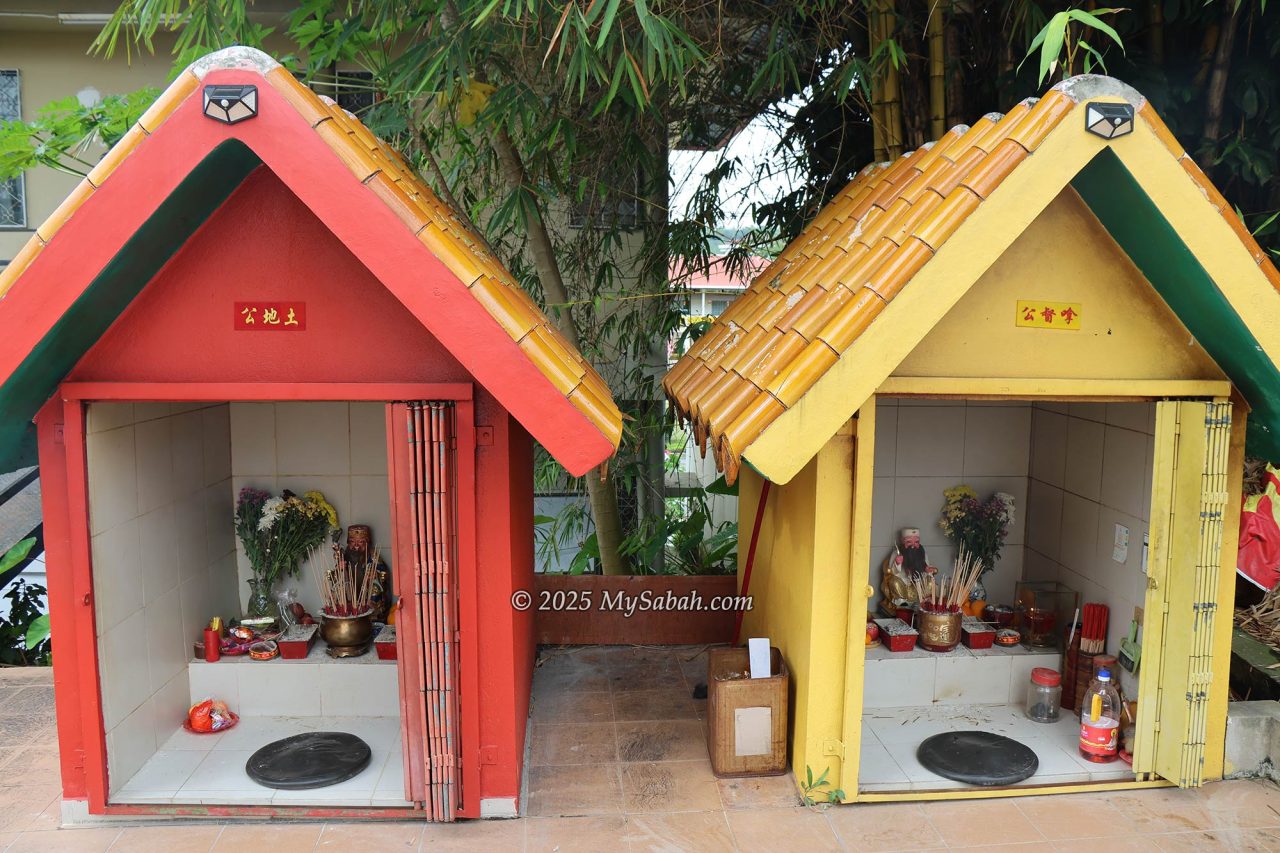
By the 1970s, statues of Datuk Gong appeared. The typical figure today shows an elderly Malay man in a sarong, wearing a songkok. He may hold a kris (Malay dagger) or tongkat (walking stick) in one hand and a sycee (Chinese gold ingot) in the other. Many believe this design was inspired by the Chinese Earth God.

By comparison, the Earth God is usually shown as a smiling elderly Chinese man with a long moustache, wearing Chinese official robes and hat. He holds a walking stick or jade ruyi in one hand and a sycee in the other.
2. Offerings
For Datuk Gong, worshippers usually offer Malay-style foods and items such as turmeric rice, nasi lemak, curry chicken or lamb, flowers, fruits, black coffee, tea, tobacco leaves, betel nuts, candles, and kemenyan (traditional incense). Pork and alcohol are avoided.
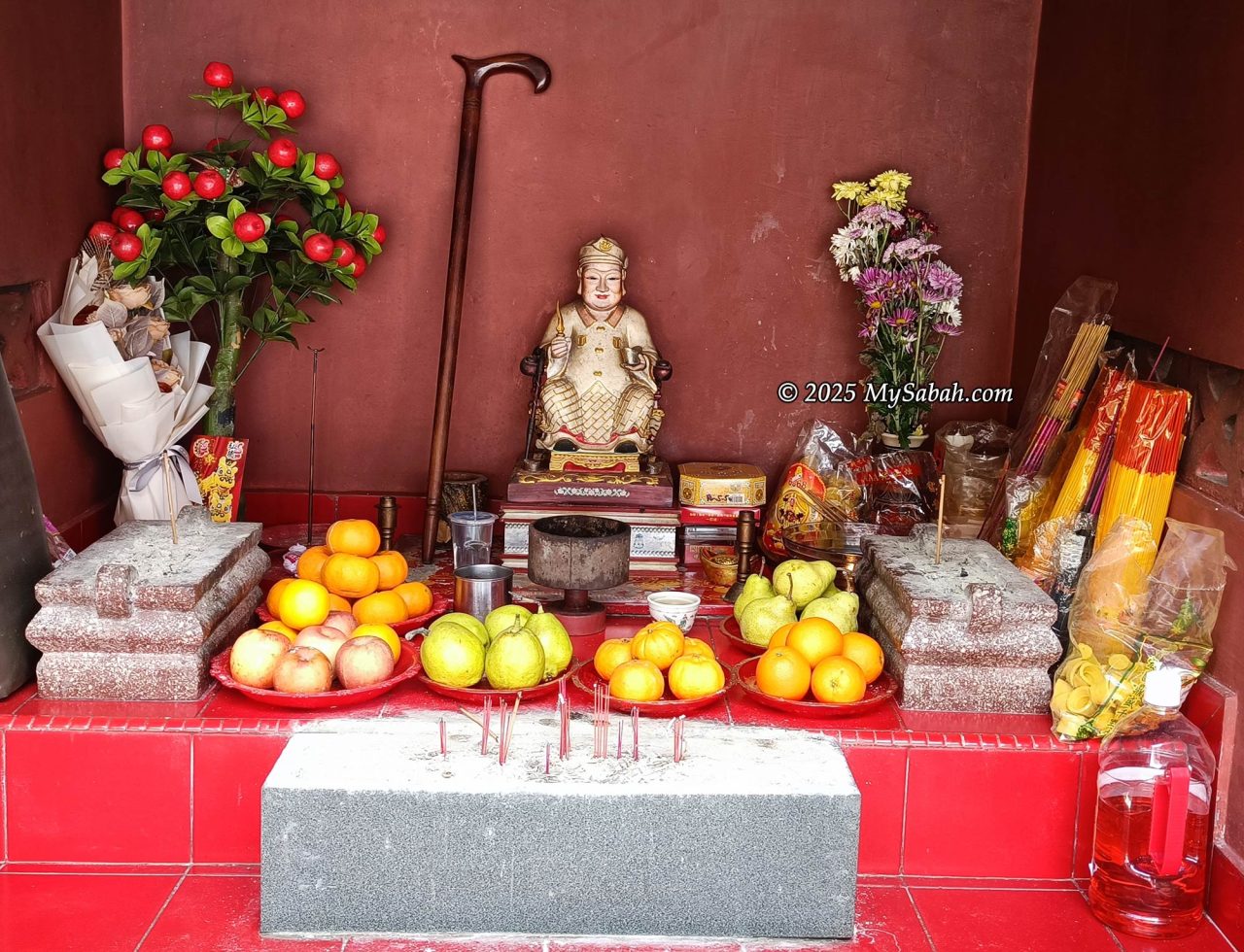
Tu Pek Kong, on the other hand, receives more typical Taoist offerings. These can include incense, candles, joss paper, tea, rice wine, fruits, cakes, pastries, and cooked foods, including pork.
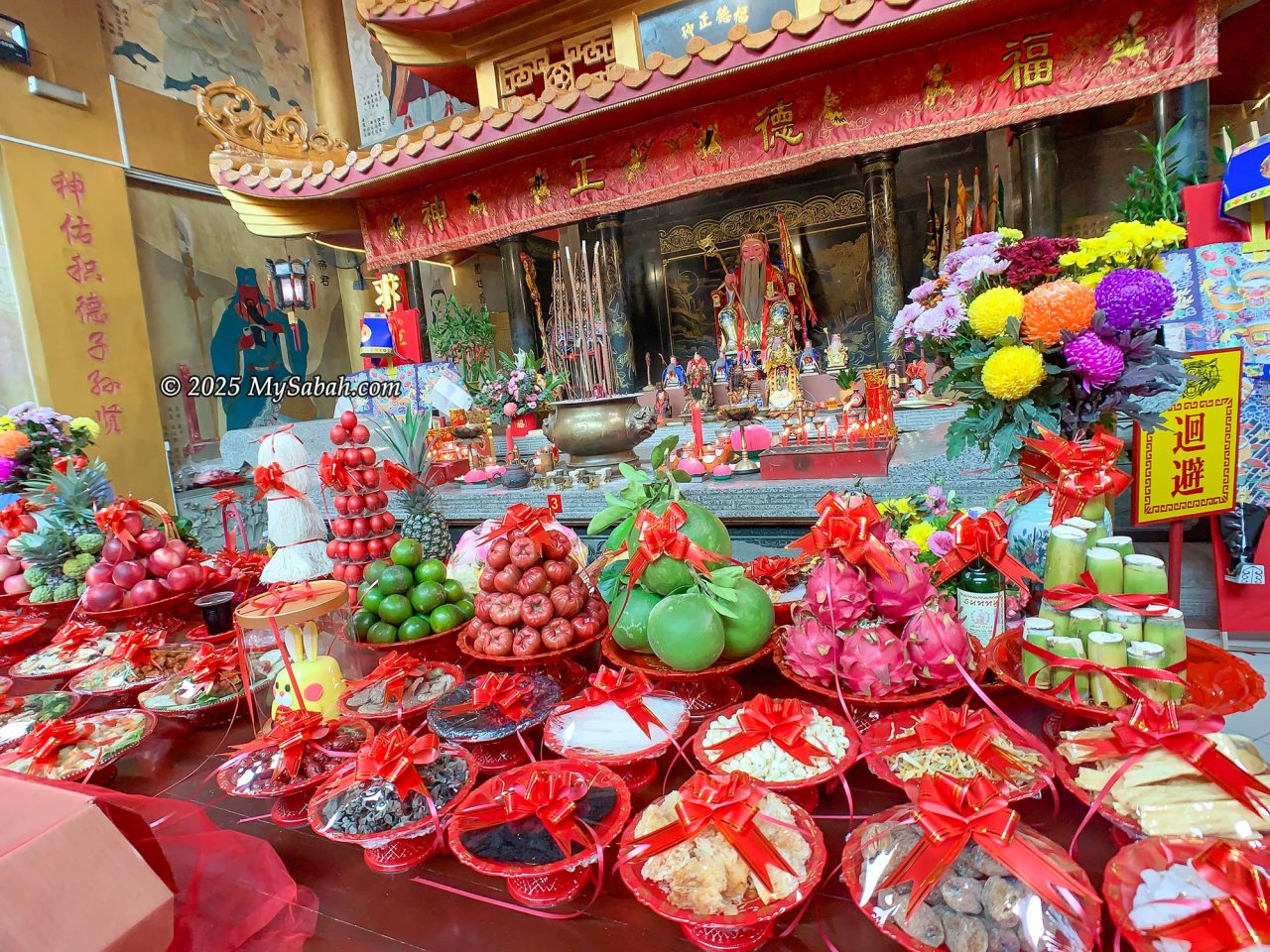
3. Identity
Because of his origins, Datuk Gong is usually regarded as Malay. Many devotees address him in Malay, prepare offerings in Malay style, and follow Muslim-friendly practices such as avoiding pork and liquor.

Tua Pek Kong, however, comes from China with a history stretching back over a thousand years. In Taoism, he is known as 福德正神, a heavenly officer appointed to protect human beings, the land, and spirits.
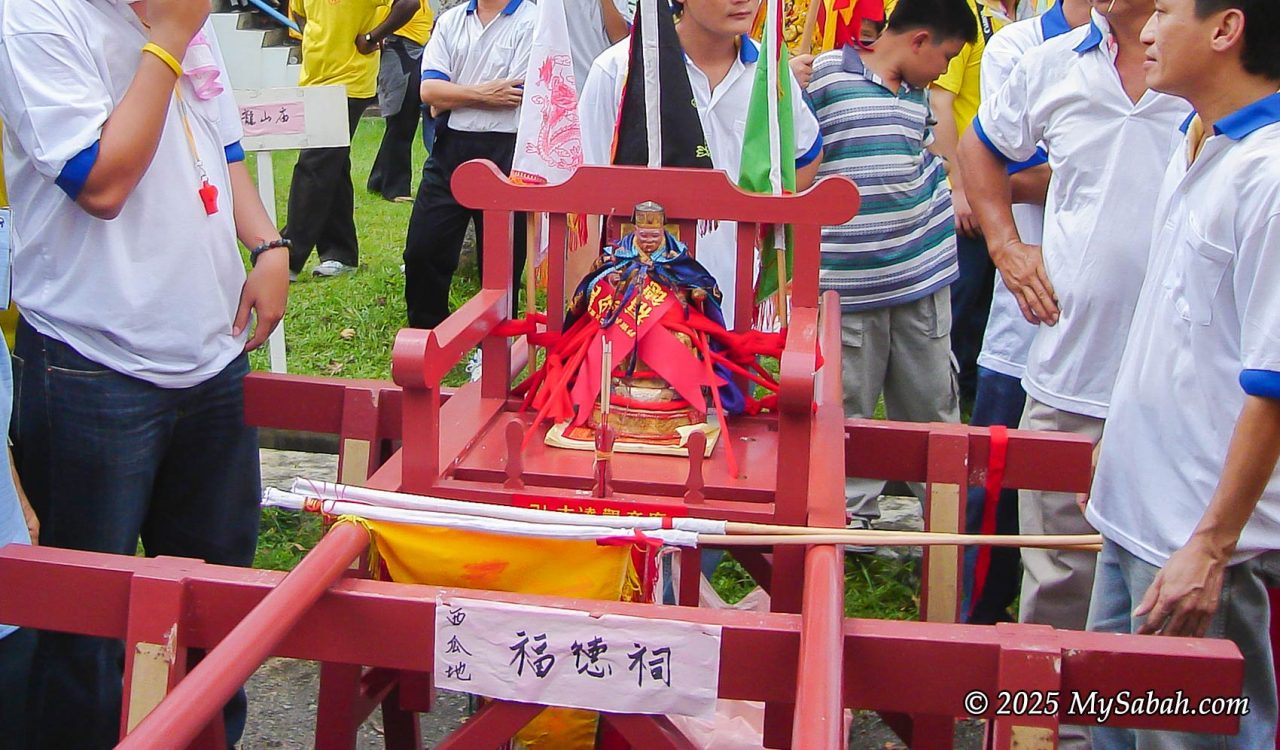
In general, Tua Pek Kong is seen as kind and benevolent. Datuk Gong, on the other hand, has a more mixed reputation.
4. Image and Reputation
Both Datuk Gong and Tua Pek Kong are often asked for blessings of health, peace, and wealth. However, Datuk Gong is especially famous for giving lottery numbers. Many devotees promise to repay him if they win. Those who fail to keep their word risk misfortune.
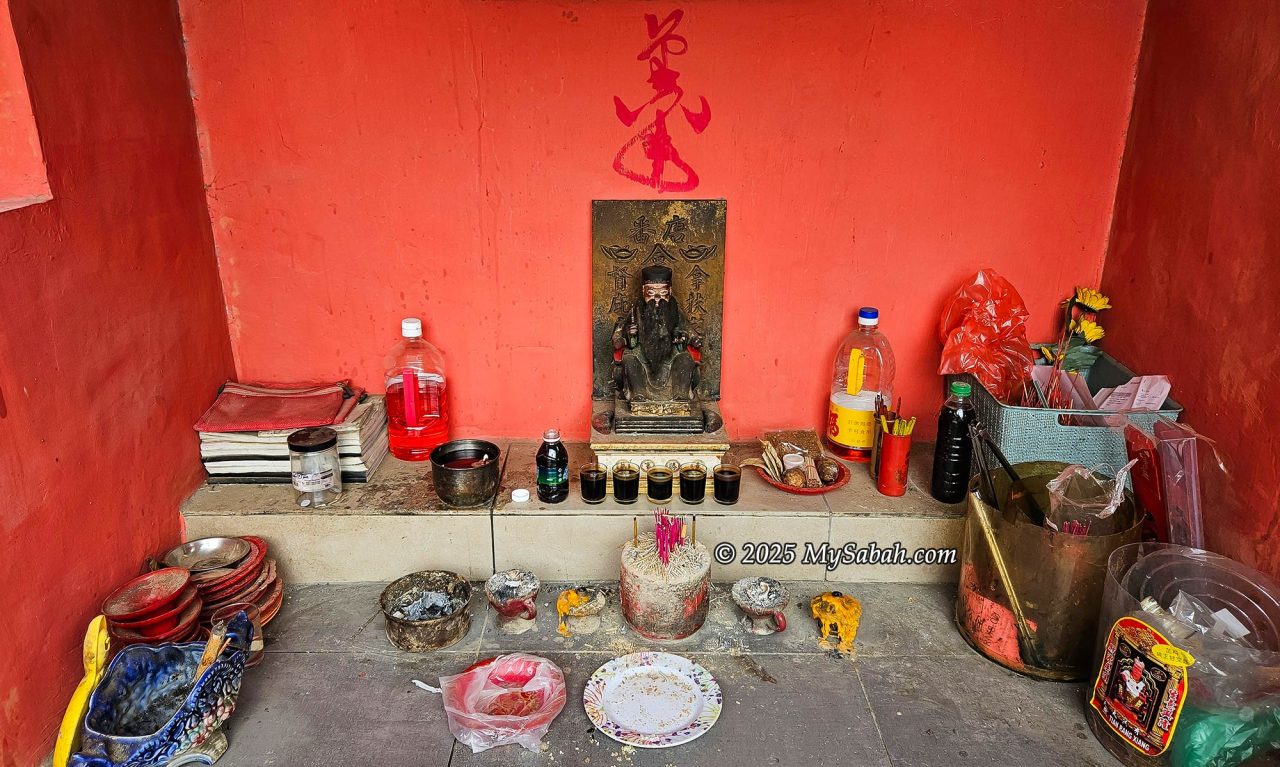
Tua Pek Kong, in contrast, is not associated with gambling. He is more about steady blessings and wealth earned through honest effort. He does not punish devotees who forget to repay him, although showing gratitude is always appreciated.
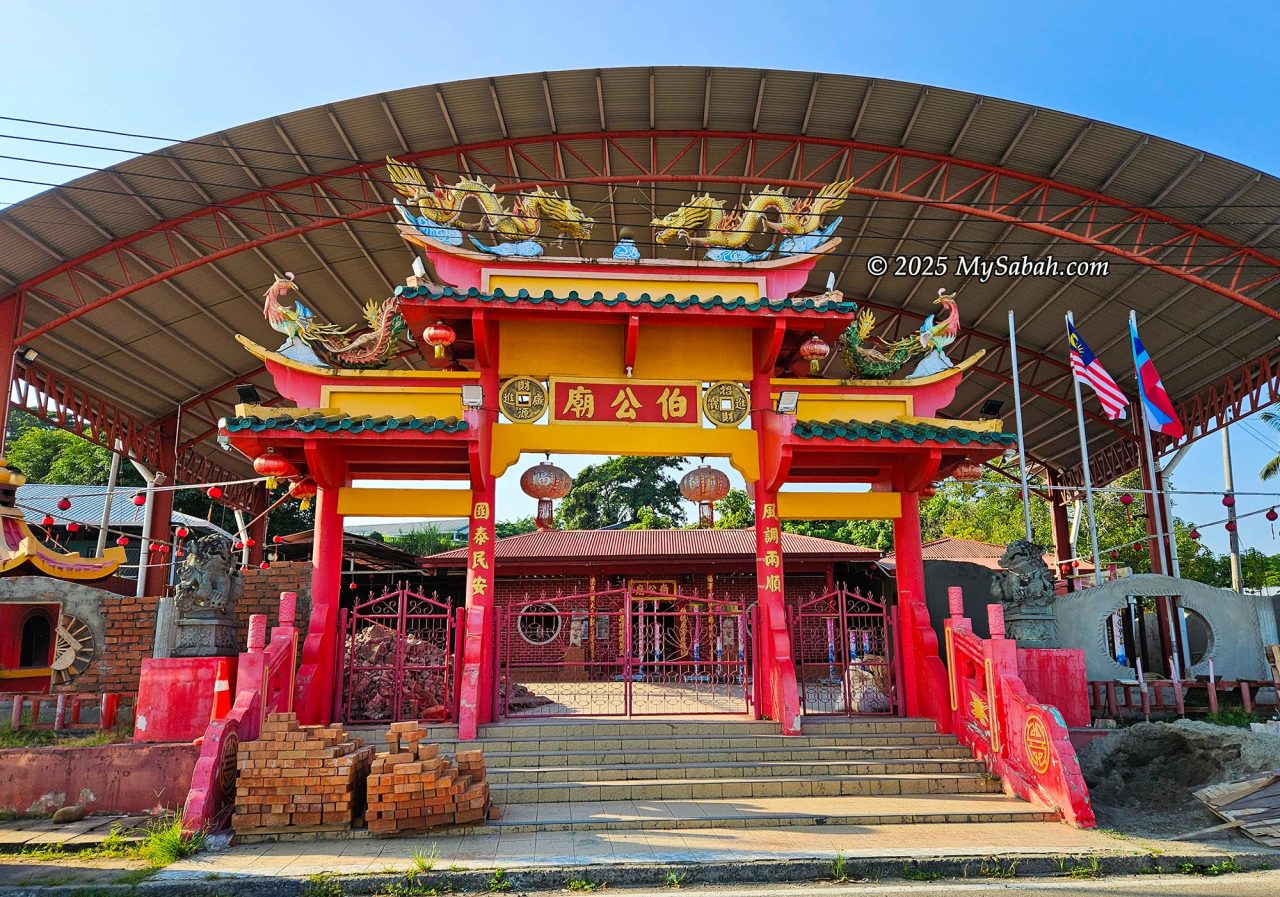
Historically, Chinese settlers saw Datuk Gong spirits as wandering ghosts of a certain place. They could be dangerous if offended, which is why offerings were made before cutting down trees or starting construction. In some cases, workers even refused to begin work unless a shrine was set up.
5. Placement
Datuk Gong usually protects small areas like a street, a housing block, or a work site. His shrine is often placed outdoors or on the ground to guard the space.
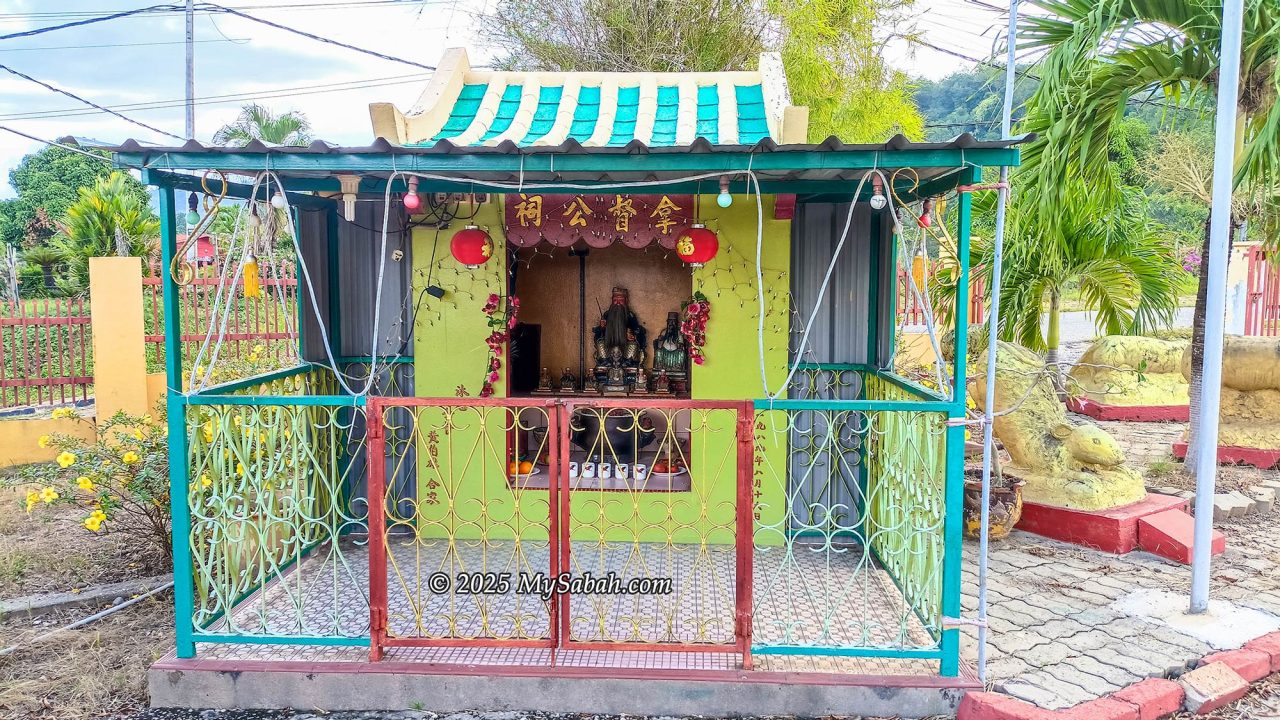
Tua Pek Kong, on the other hand, is a heavenly official. His statue is found inside temples, often on the main or secondary altar. While Datuk Gong can be the main figure in some temples, it is more common to see him as a secondary guardian.
Stories of Datuk Gong in Sabah
1. The Food-Loving Datuk Gong
A friend (Mr. J) from Keningau told me about his special bond with a Datuk Gong. Years ago, he worked regularly in a remote forest area. With no accommodation or electricity nearby, he often camped on site.
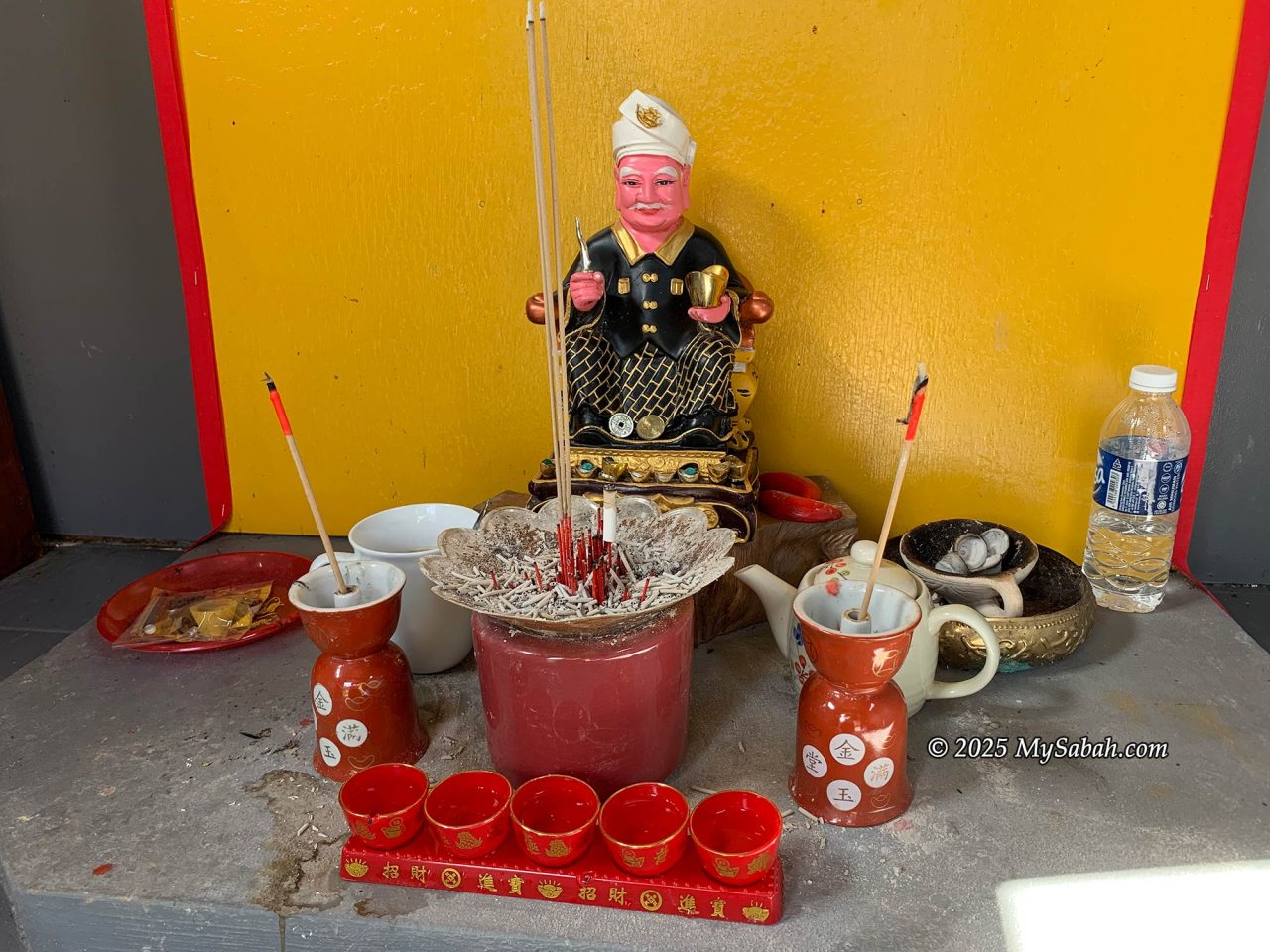
To cook, he made a simple stove by stacking rocks, placing a pot on top, and lighting a fire. Over the years, the stones turned black from the heat. But whenever he left and returned, one of the stones always rolled back into place, as if it wanted to be used again.
Later, when a proper building with a kitchen was constructed, Mr. J no longer needed the stones. But one of his coworkers had a strange dream. He saw a dark figure complaining that it could no longer enjoy the food because the stone was not used in cooking anymore.
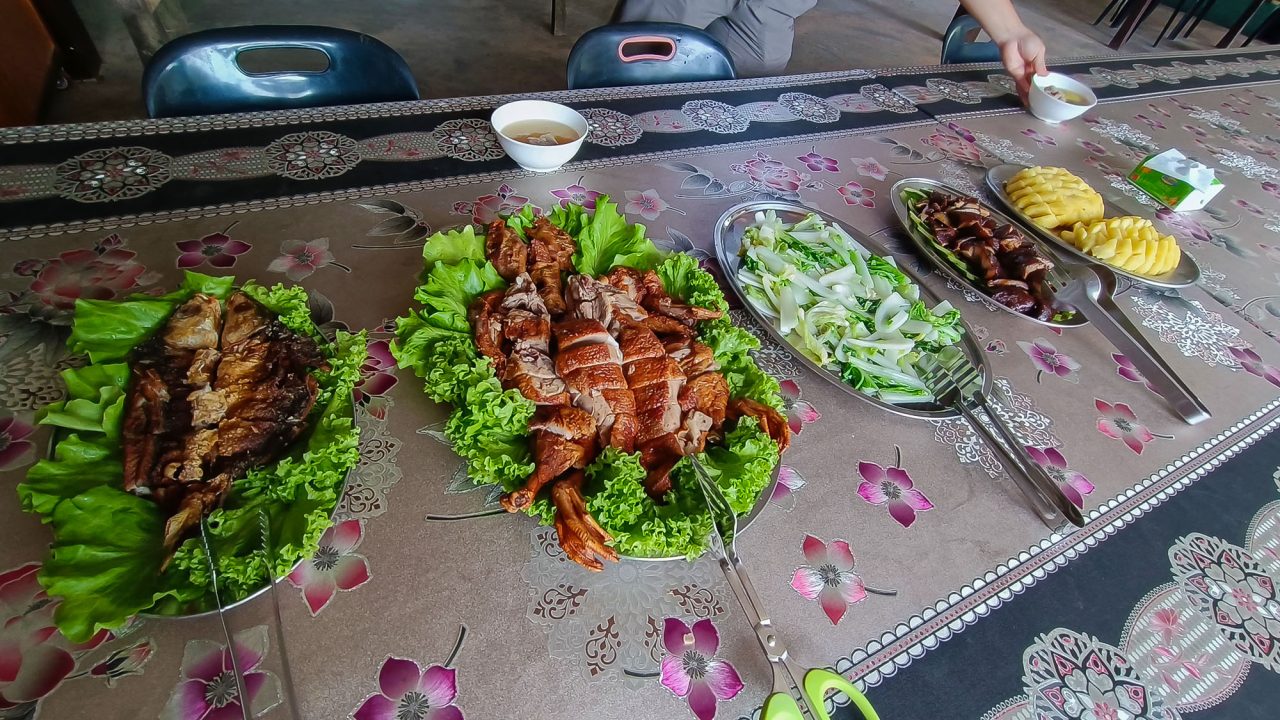
Realizing this was a message, Mr. J built a shrine and placed the blackened stone inside. Since then, the Datuk Gong has acted as guardian of the site and even saved Mr. J from a serious accident.
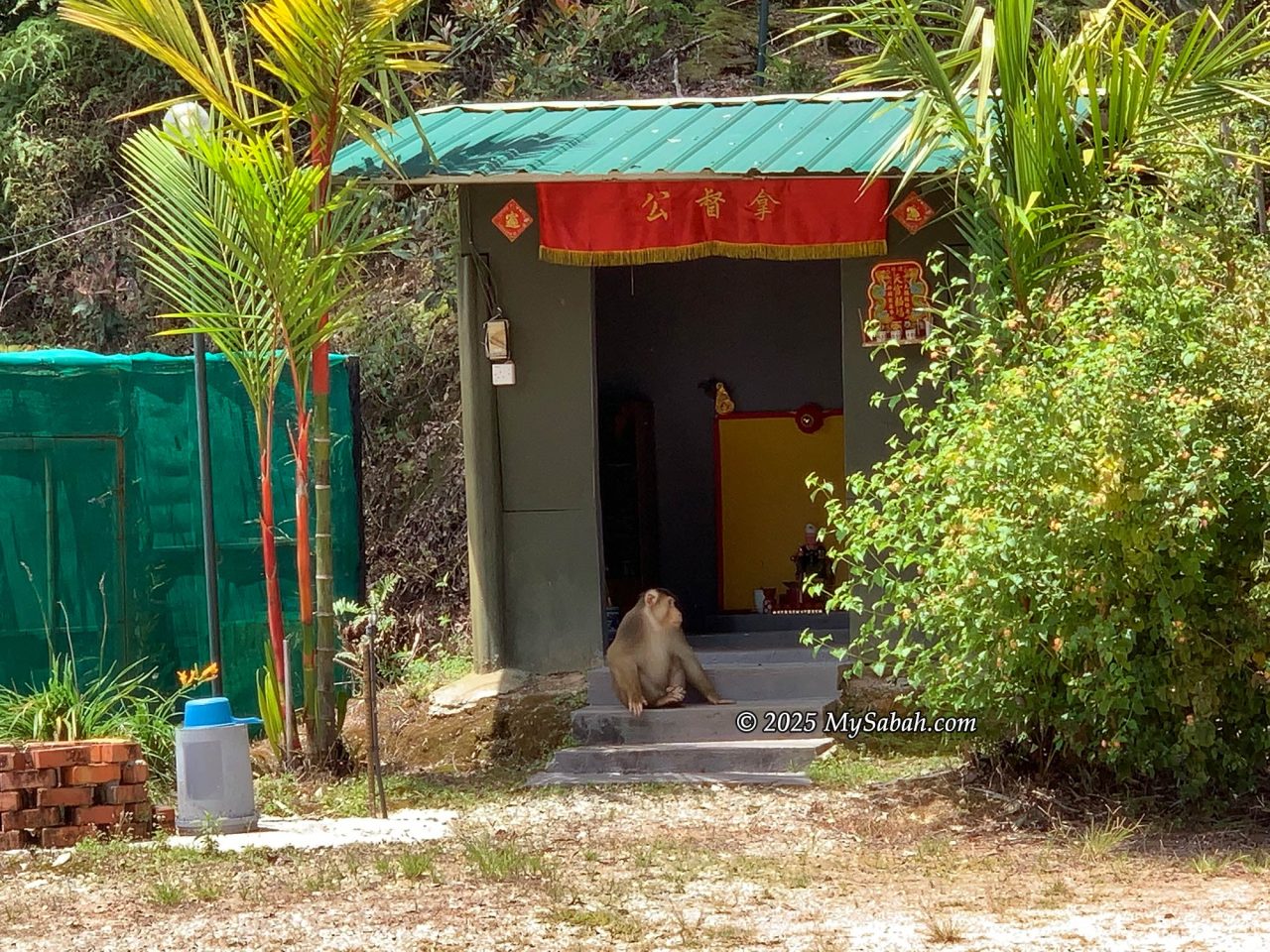
This Datuk Gong is said to prefer black cloth and blue light for his shrine. Most of all, he loves food. Visitors often notice strange signs after meals, such as leftovers appearing on empty seats. I experienced it once myself. After eating lunch alone, I noticed chicken bones and rice on the spot next to me. Nobody had sat there. Where did it come from? 🤷
2. Datuk Gong in the Banyan Tree
One of the oldest temples in Sandakan is Tam Kung Temple (谭公圣祖庙), built in 1876. It is recognized as a national heritage building by the Sabah Museum.
Beside the temple stands a century-old banyan tree. Locals say this tree is the home of a Datuk Gong. Because the tree had no shelter, people believed the spirit often moved under the temple eaves to avoid the rain.
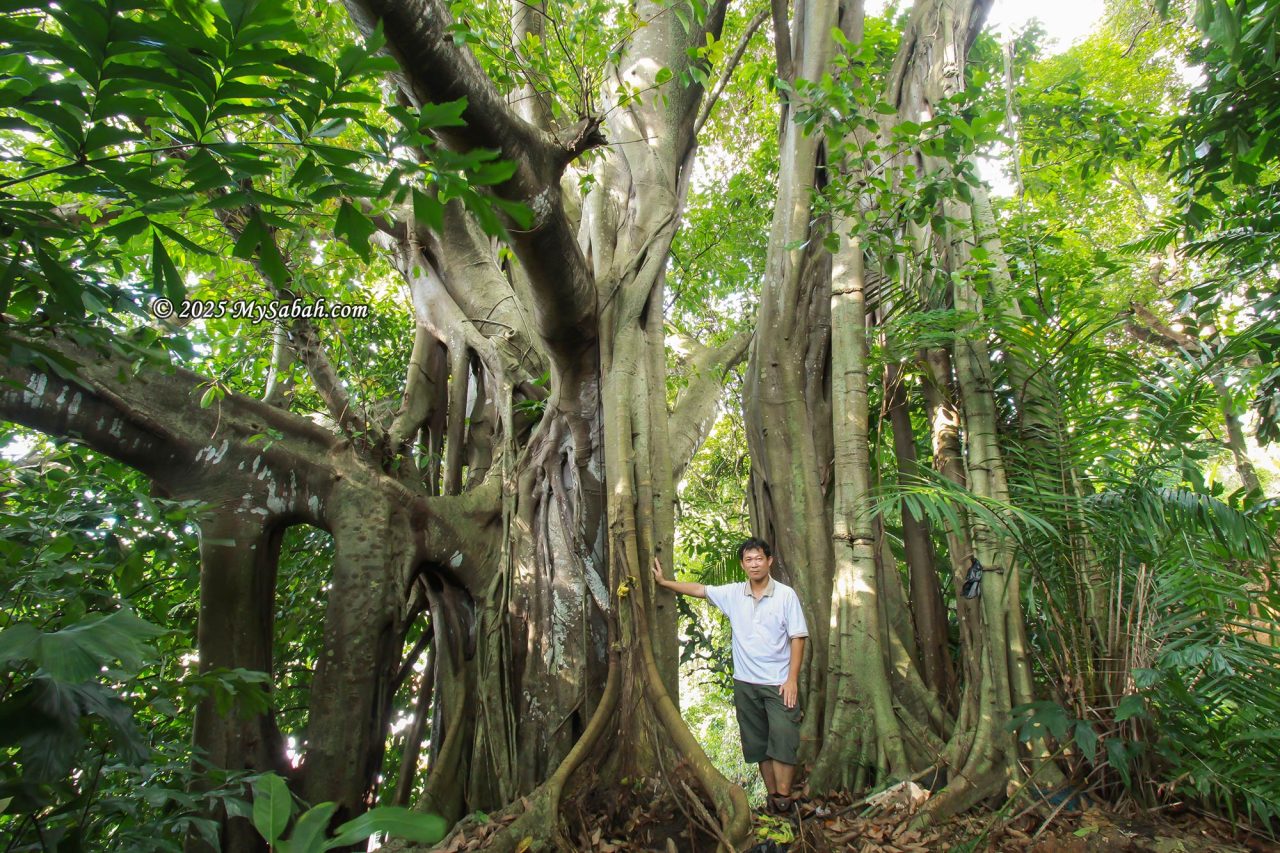
At one point, workers noticed water leaking from that spot and planned to dig into the ground. But when they tried, the machines would not work properly. Later, two temple caretakers received spiritual guidance that this was the Datuk Gong’s resting place. They promised to build him a new “house”. Only then did the project succeed.

Today, the banyan tree has become a famous wishing tree in Sandakan. Locals and tourists alike visit to make wishes, and pay their respects. (Source: “守护华人百年信仰·窥探传奇谭公庙” by Sin Chew Daily Malaysia (星洲日报))
References
- Ng, Bernard Jia Han (吳佳翰). “Temple Shrine, Heroic Spirit and Anthill: Diverse Practices of Datuk Gong Cult in Sabah” (從神殿、英靈到蟻丘:沙巴拿督公信仰的多樣實踐). Asia-Pacific Research Forum, Issue 67 (June 2020). Link
- Wang, Zhaoyuan. “The dynamic process of syncretism: Datuk Gong worship in Malaysia.” HTS Teologiese Studies, Vol. 78, No. 4 (2022). Link
- Kaur, Parveen et al. “Divine Concept of the Belief in Datok Gong in Malaysia.” Hong Kong Journal of Social Sciences, Vol. 61 (Spring/Summer 2023). Link
- “Datuk Kong belief was learned by the Chinese from the Malays in the past?” YouTube video, 21 Aug 2024. Link
- “拿督公千年演化史.” YouTube video, 21 Sep 2024. Link
Disclaimer
The information shared here is based on general observations, oral traditions, and published studies. In practice, beliefs and rituals surrounding Datuk Gong can vary widely. The full picture is much more complex, and exceptions exist in many communities.
Photos taken in Sabah, Malaysia Borneo
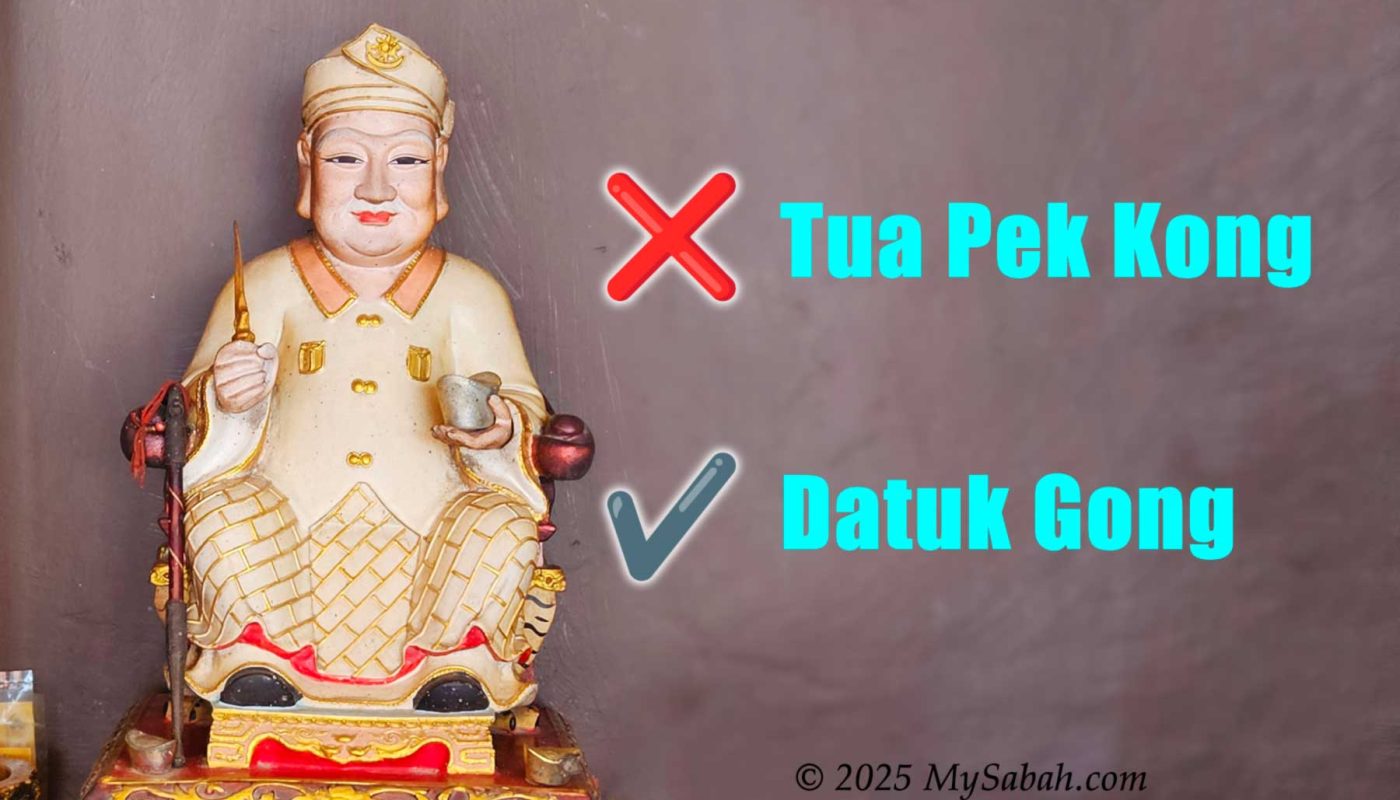


Thanks for this information, very interesting
Glad you like it